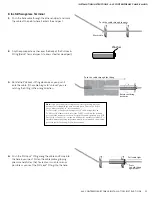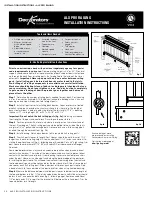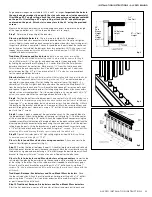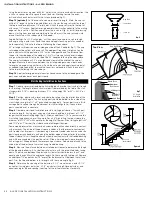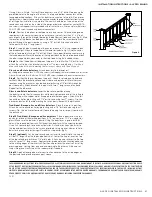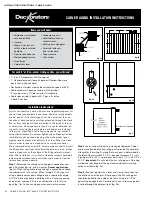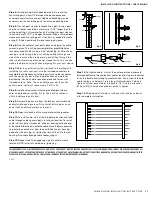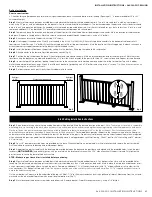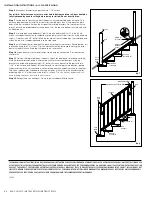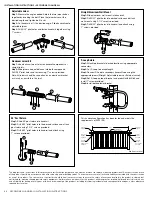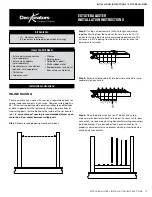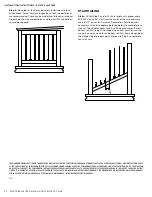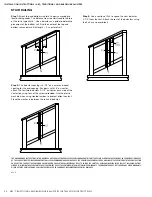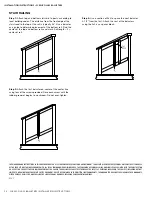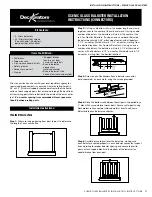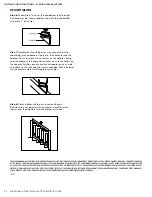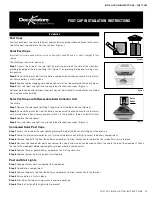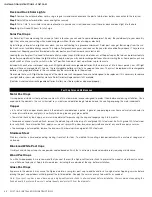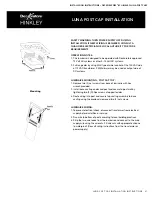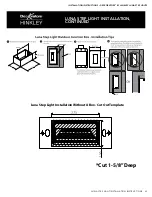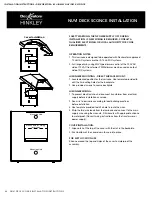
CLASSIC BALUSTERS INSTALLATION INSTRUCTIONS 49
CLASSIC BALUSTER
INSTALLATION INSTRUCTIONS
Kit Contents:
Items You Will Need:
INLINE RAILING
Prior to construction, check with your local regulatory agency for
special code requirements in your area. Common railing height is
36
"
. Structural support should come from either the continuation
of deck support posts that extend up through the deck floor or
from railing posts that are bolted to the inside of the rim or outer
joist.
6' on-center post spacing is recommended. Never span
more than 8' on-center between railing posts.
Installation Instructions:
Step 2:
Cut top and bottom rails (2x4s) to length and clamp
together. Mark top and bottom rails 4-1/2
"
on-center, starting from
the cetner of the rail.
Step 3:
Using a drill driver, screw on Deckorators baluster
connectors (sold separately) on each mark using the screws
provided. Apply silicone caulk on each connector to prevent
balusters from turning or rattling after installation is complete.
The caulk should be on the outside of the connector, where the
baluster will make contact with the connector’s outer edge.
Note: Specific types of treated lumber are known to corrode
aluminum. Deckorators baluster connectors provide a barrier
between the aluminum balusters and treated lumber to ensure
long term performance.
• Deckorators baluster
connectors (sold separately)
• Deckorators stair connectors
set at 35° (sold separately)
• Deckorators rail connectors
(optional, sold separately)
• Drill driver
• Tape measure
• Clamps
• Safety glasses
• Carpenter’s pencil
• White rubber mallet
• Support blocks (can be cut
from scrap rail material)
• 10 - Aluminum balusters
(2.5 balusters required per linear foot of railing)
Step 1:
Measure railing opening, from post to post to
determine the length of each baluster rail section.
Step 4:
Place the bottom rail between the rail posts, supported
by a 3” block (2x4 scrap material works best). Secure rail to posts
using Deckorators rail connectors (sold separately) and slide
balusters over the bottom connectors. Carefully place top rail over
the balusters, making sure each baluster is seated properly on
each connector.
INSTALLATION INSTRUCTIONS • CLASSIC BALUSTERS

